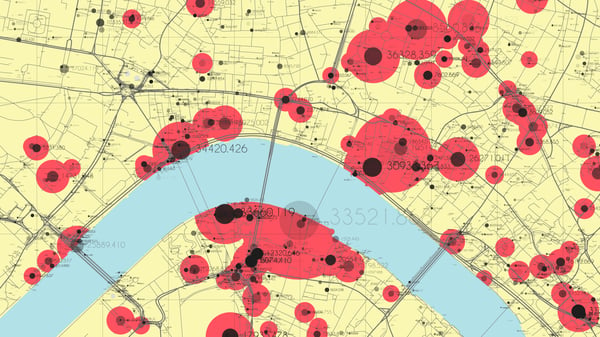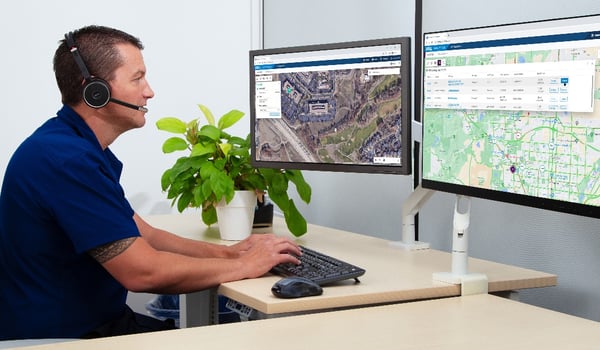4 Must-have Data Points for Dispatch-Billing Alignment and Maximum Reimbursement
New Perspectives Call for New EMS Practices in 2021
Undoubtedly, things have changed as a result of COVID-19

Undoubtedly, things have changed as a result of COVID-19. What were once accepted practices are no longer sufficient. EMS agencies must learn to navigate the future with less reliance on historical perspective.
(6 min read) Ambulance services across America have been impacted by COVID-19 on a variety of levels. A seemingly prosperous 2019 for many agencies – with strong transport volumes and income greater than in past years past – rapidly came to a halt as 2020 got underway.
Many EMS agencies can attest to the optimism coming out of 2019. The Centers for Medicare & Medicaid Services (CMS) ET3 initiative had launched, cost data collection was a hopeful avenue to show the need for increased transport reimbursement, the debate over degrees and nomenclature ("Are we all paramedics?”) for EMS providers seemed to be ramping up. Old perspectives provided guidance for shaping the future of our industry...and then COVID-19 hit. Suddenly, everything that we thought we knew was in question, and the necessity for navigating conditions while developing new practices became apparent.
Decreased Volume Leads to Decreased Revenue but Heightens Focus on Quality
If anything “good” comes from decreased call volumes in the first half of 2020, it will be an increased urgency to do more, differently. Lower transport volume leads to lower revenue, which in turn leads to reduced staffing and decreased service capacity. If the money isn’t there to support your agency’s operations, what options remain?

While none of us can magically make call volumes increase, we can work internally to verify the quality of what we submit for billing. Now, that’s not to accuse anyone of doing a poor job in the past. Rather, it’s a call to focus our efforts on quality reporting to maximize first-round billing and avoid additional time, effort, and delayed reimbursement. Capitalizing on the features of your electronic patient care reporting (ePCR) software can help your ambulance service to better document transport necessity, actual care provided, and accurate patient demographics, which helps those in the office to do their jobs and get everyone (including you) paid.
Kinks in Supply Chains and Better Attention to Safety
What was once an easy task — to order a case of gloves for only a few dollars per box — has turned into an ordeal. It’s a challenge to find just a few boxes (which have now tripled in price)! Combine that with increased burn rates of both surgical and N95 masks, disposable gowns, and other personal protective equipment (PPE)-related items, and it’s clear that we’ve entered a full supply-and-demand market in terms of PPE supply chains. At least we’ve been able to leverage our ePCR programs to help track our own internal demand and inventory levels!
Increased equipment needs lead to increased storage space requirements, a need for improved restocking processes, and determining Plan B — and C and D — when it comes to PPE. Aside from the logistical and financial nightmares associated with this, I guess the silver lining is the increased focus within the healthcare industry on safety. It took mass shootings for schools and communities to become hyper-aware and better prepared for such events, and it took a pandemic of global proportions for all of us to better focus on PPE and on safety for us and for our patients.
Moving forward, let’s keep our focus on safety alive. Glasses and masks should become the new norm, particularly for any close contact or airway procedures. Students need to be trained while wearing masks, new hires need to be appropriately fit tested before they hit the streets, and current employees need to catch up, too. Proper decontamination procedures should remain a primary concern rather than an afterthought.
Historical Trends Punctuated With an Asterisk Justify Public Health Focus
A steady 2-5% annual increase in call volume for many ambulance services has been disrupted by a 20% or greater drop in 2020, according to some in the industry. Rather than factoring 2020 call volumes into historical trends and future predictions, many agencies likely will place an asterisk next to 2020 numbers to indicate a massive aberration in the data and equally massive budgetary hit. What has this taught us?

For starters, we’re not immune to large-scale disruption. Second, old data may not have as big an impact as the new data will. That’s not to say that historical data won’t matter (it still will), but it might be viewed differently. Perceptions about EMS have changed rapidly his year, along with the calls we’ve responded to and the data we’ve collected. Now more than ever, we’ve become an integral part of the healthcare system — regardless of the color of our vehicles. Hopefully, we’ve demonstrated our value sufficiently to be considered for additional funding.
In communities across the country, field and community EMTs and paramedics have been a part of the screening process, identification, emergent care, and safe transportation, of COVID-19-infected patients. Regardless of our public safety roots, we are a part of the healthcare and public health systems, and we deserve recognition, funding, and representation as a result. After all, our numbers have suffered during this pandemic just like those of the hospitals. Now, with a spotlight shown on us, hospitals can see that we are one of “them” and not just a distant relative. Moving forward, let’s utilize our data to build justification for our services in a new light — one of a combined mission rather than divided purpose.
Shaping EMS Future in 2021 and Beyond
Whenever COVID-19 is “over” (if that truly will ever happen), the dust of 2020 will settle and the true, long-term impact will be palpable. Doors closed to tax revenue-generating businesses will lead to decreased municipal revenue. Fewer commuters will lead to less traffic and fewer injuries (which is good but remember — we’re still “owned” by the Department of Transportation). A new “purpose” for our existence will likely emerge. There are things our industry can do to influence our future. These include:
- Lobbying for increased (long-term) Department of Health funding support
- Pushing the ET3 agenda to validate our complaints of chronically poor reimbursement rates
- Capitalizing on preparedness grants and funding sources to better prepare for the next pandemic
- Documenting accurate and thorough ePCR data that leads to first-time claim acceptance
- Informing community leaders about the impact that decontamination times, total call times, and provider burnout have on their services
Our increased focus on quality, safety, and public health will help us navigate toward a new definition of the role of the EMS and ambulance transport industry, and it will be done without the old perspectives’ influence. 2020 has been disruptive in many ways. Now is the time for us to look to the future to reveal what positive impacts may come out of our experience. We won’t be looking back at “what once was” to predict “what will be” in 2021 and beyond.
Read More on New Approaches in 2021 and Beyond:
Interoperability Has Come a Long Way, but There Is Much to Be Done
Related Posts
How EMS Agencies Can Reframe Need and Refocus Resources With Geospatial Analytics
How To Minimize Radio Chatter and Reduce Guesswork With Smarter Dispatch Resource Management
ZOLL Pulse Blog
Subscribe to our blog and receive quality content that makes your job as an EMS & fire, hospital, or AR professional easier.
ZOLL Pulse Blog
Subscribe to our blog and receive quality content that makes your job as an EMS, fire, hospital, or AR professional easier.




